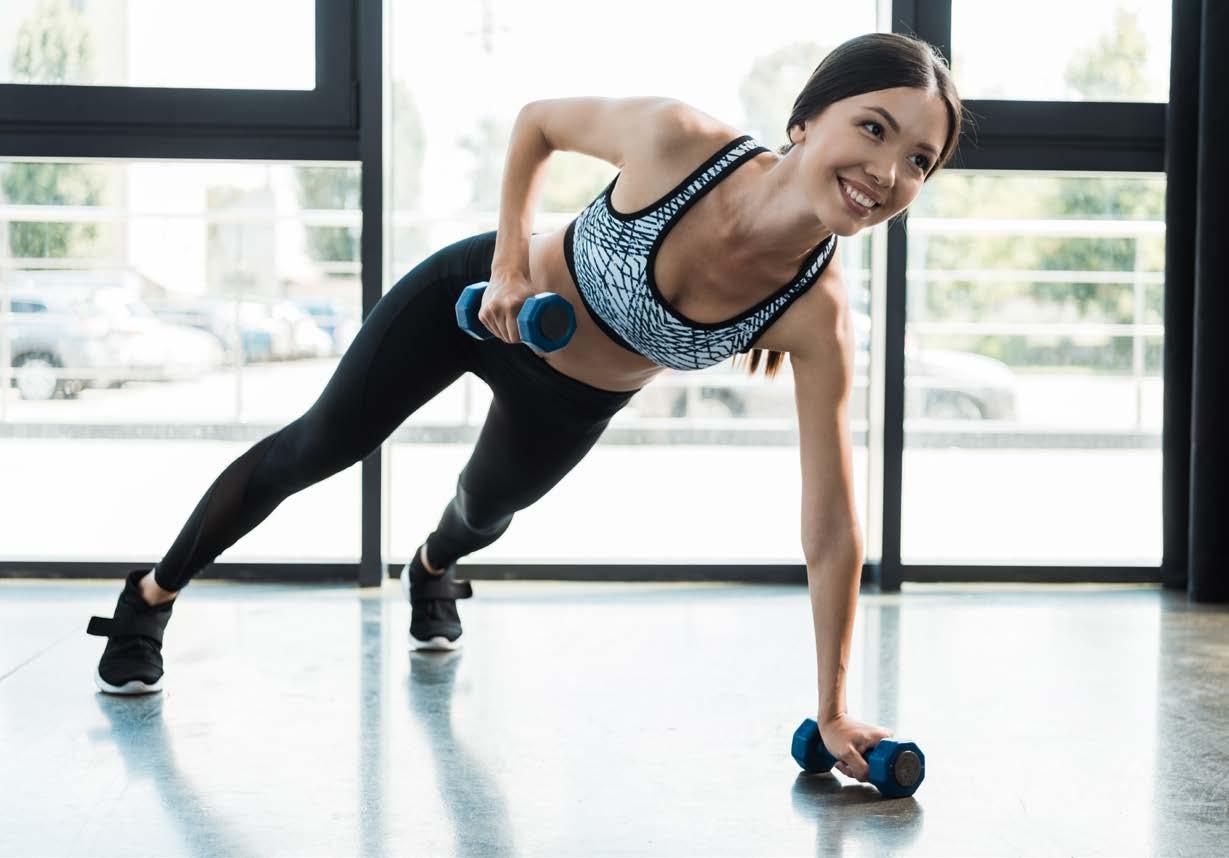
4 minute read
Benefits of Using Free Weights in Your Exercise Routine
A 2008 study published in the Journal of Strength and Conditioning Research compared the results of working out with free weights versus exercising with resistancetraining machines. The study revealed a 58% greater strength increase, and a 196% increase in balance for participants who exercised using free weights versus resistance training machines.
Free weight exercise helps you burn more calories. The extra energy that is expended coordinating brain and muscle function to maintain balance while doing free weight workouts results in an increase in the number of calories burned.
Free weight repetitions encourage use of the legs, core, and chest muscles to stabilize the body which means that you’re using more muscle groups than you would with just machines alone.
Free weights help increase balance and coordination. Your body will know how to make necessary adjustments to perform the movements in the event that a particular part of the body has a certain weakness. Free weight exercises offer a ton of variety in the type of workout you choose to do. Target specific muscle groups or perform a full body workout. You can always download a new workout or follow along with a video for new ideas and movements that you may have never tried before.
Free weights can provide a total body workout that has you toning problem areas as you shape and sculpt.
Tips for Buying Free Weights for At-Home Use
If you have never purchased your own set of free weights before, you may be wondering where to begin.
Women who are just starting out with a free weight exercise routine and do not have prior experience with strength training or the ability to lift heavy objects might want to start with a lightweight set of barbells.
Start out with 3 pairs of dumbbells - 3-pound, 5-pound, and 8-pound weights. If you’re really needing to build strength, then you might consider adding one-pound weights to your collection as well.
Because of their higher levels of testosterone, men have greater muscle mass then women, which means if you’re a guy just starting out with a free weight workout, then you may already be able to lift 10 or 15 pounds easily.
If you aren’t sure how strong you are, you might try testing out various objects in your home to see how heavy they are and how many reps you can easily perform, before purchasing your own set of free weight dumbbells.
For example, cans of soup and gallons of milk could be a good way to test the amount that you can lift in a controlled movement. Set the item on a scale before testing to see how many reps and sets you can perform by lifting and lowering the object.
A “set” is a series of reps, or repeated lifting movements that you do with free weights held in your hands.
The standard set of “reps,” or repeated motions that you would perform using free weights, such as a
bicep curl, is typically 12, though some workouts might have you doing sets of another low number, such as 8 or 10 reps. You will often be instructed to perform 3 “sets” of, say, 12 reps of one single exercise using free weights. Free Weight Workout Ideas If you’ve never done a workout with free weights before, you might try viewing some videos online to get an idea of the proper form. A few Google or YouTube searches can have you learning about how specially designed weightlifting exercise routines can target specific muscle groups. You can opt for a quick, whole-body workout, or you can focus on certain areas, such as upper body (arms, chest, upper back), core (abdominals, lower back), or lower body (glutes, legs). Or you can shoot for a total-body workout doing free weight lifting exercise repetitions. Another easy way to learn weightlifting techniques is by purchasing a poster that shows step by step, illustrated instructions to help you target specific muscle groups with your workout.
Tips for Avoiding Injury While Working Out with Free Weights It’s important to use slow, controlled movements. Do not jerk the body or make sudden, erratic movements when lifting weights.
Use the core and large muscles of the legs to stabilize, even if you’re doing what seems like a simple movement, like a bicep curl.
Incorrect positioning of your body while lifting heavy objects can result in muscle strain or put unnecessary pressure on joints. It will help to follow along with a weight training video or work one on one with a personal trainer so you can observe and imitate the proper techniques.
Weight training experts typically suggest that you bend your knees at least slightly, keep legs fluid (to avoid locking the knees), and pull in your abdominal muscles when doing weightlifting repetitions with dumbbells or barbells.






